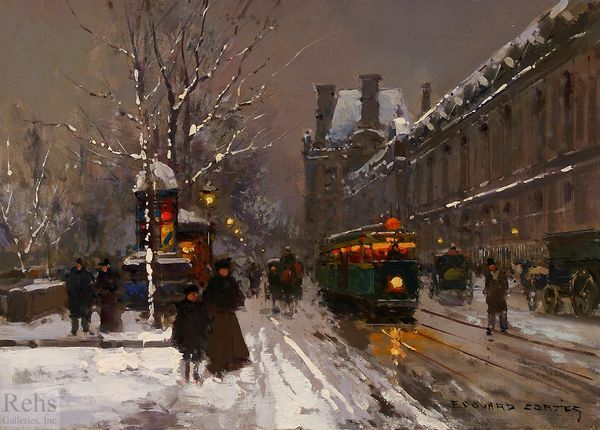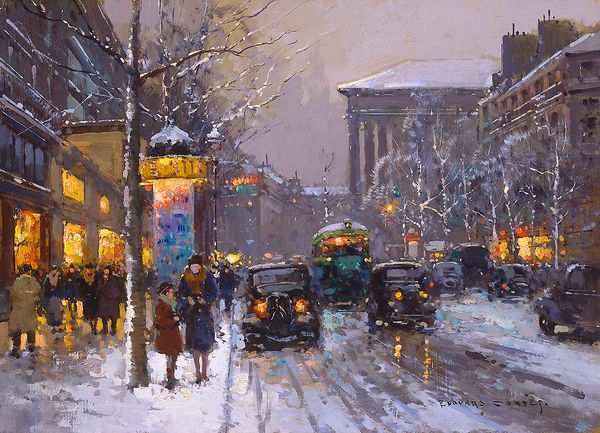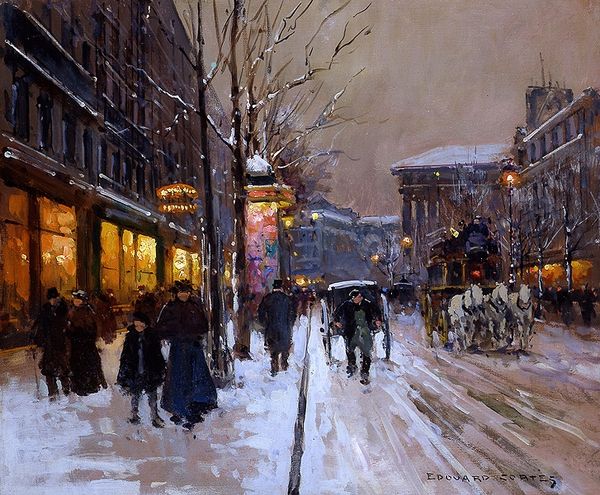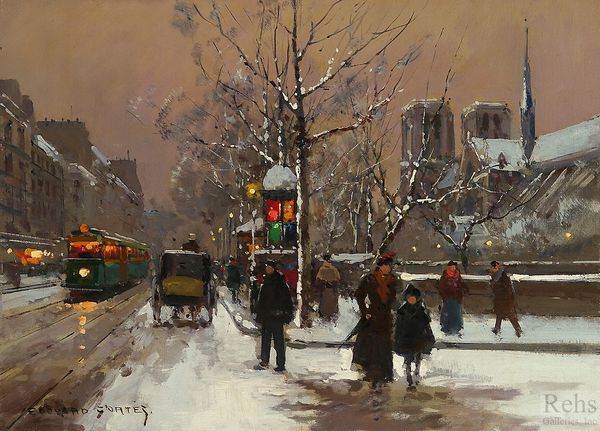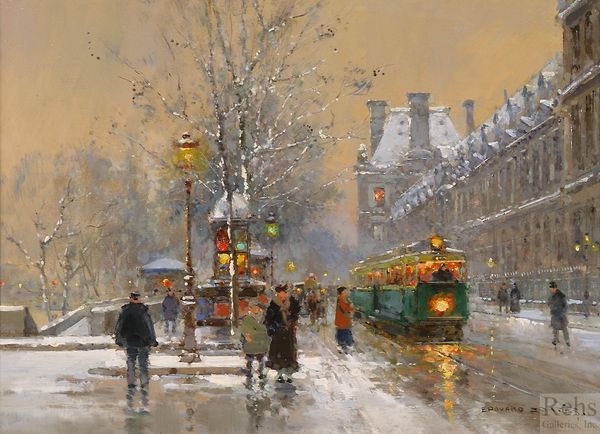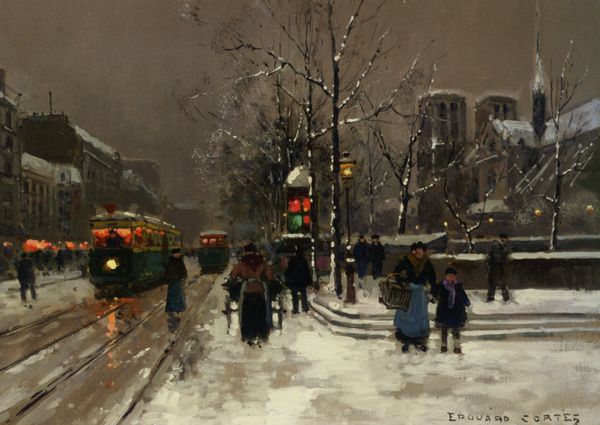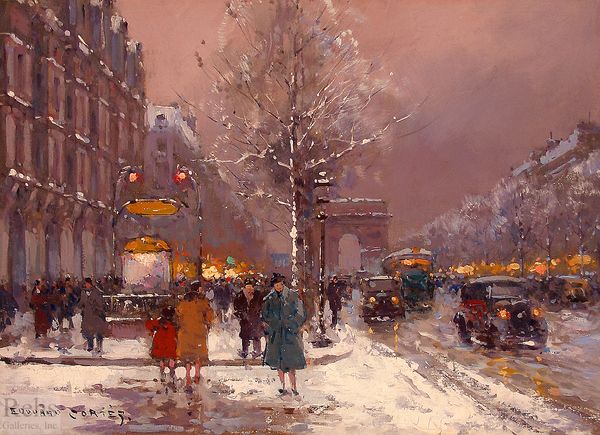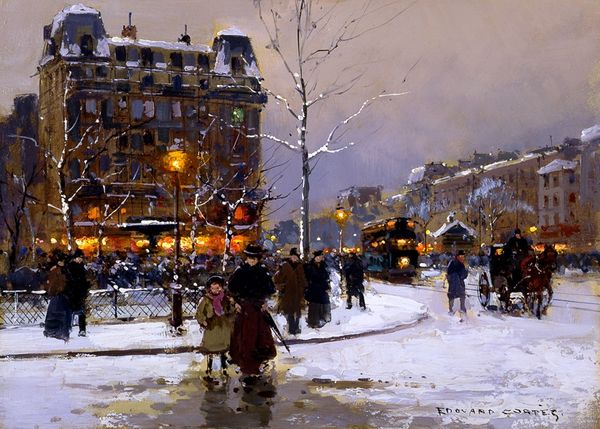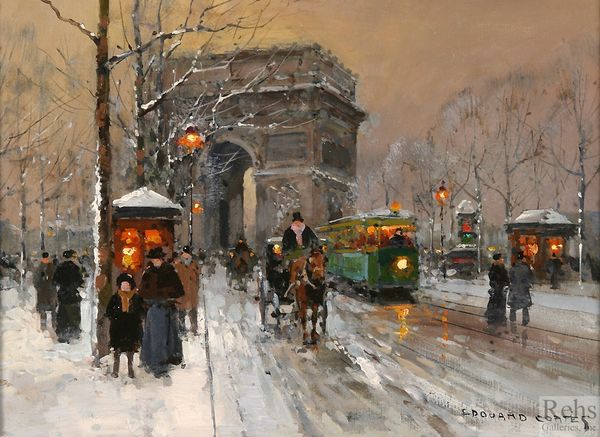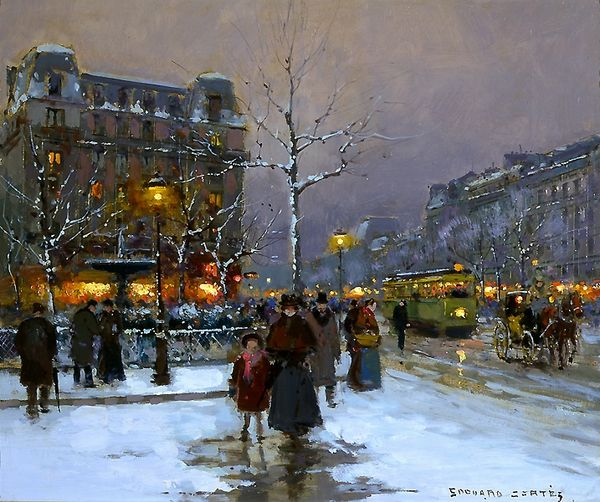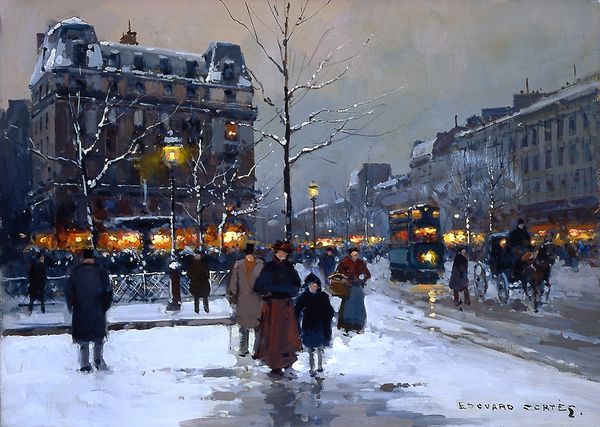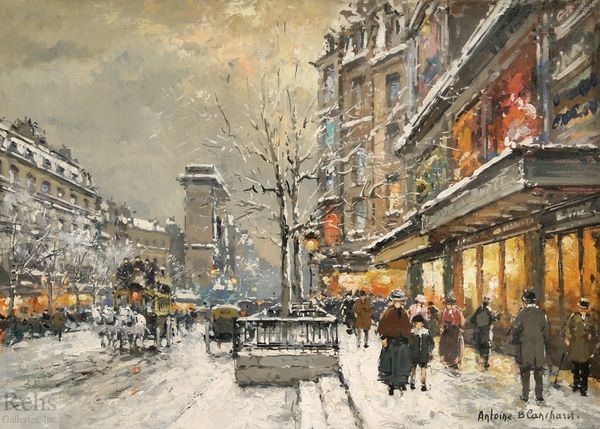
painting, plein-air, oil-paint, impasto
#
painting
#
impressionism
#
plein-air
#
oil-paint
#
landscape
#
figuration
#
street-photography
#
oil painting
#
impasto
#
cityscape
Copyright: Edouard Cortes,Fair Use
Editor: Here we have Edouard Cortes’ “Quay du Louvre,” an oil painting seemingly capturing a winter's day. There's a stillness despite the depiction of a busy street; the figures feel almost like set dressing against the architecture and the snowy ground. What do you make of this, particularly concerning the means of its production and what it communicates? Curator: Consider the materiality of this "plein-air" painting. Cortes is representing not just a scene, but a moment in Paris history marked by industrialization, rendered in mass-produced oil paint and on a readily available canvas. This challenges traditional hierarchies, doesn’t it? The supposed "high art" is intimately linked to manufacturing and commercial distribution. Notice how he’s capturing the fleeting effects of light on snow. It suggests a fascination with modernity’s dynamism—the way industry and consumption were reshaping lived experience. Editor: So you're saying the availability of materials shaped the Impressionist movement? Curator: Precisely! The readymade colors let artists engage directly with the contemporary world. It allowed for capturing everyday life with unprecedented speed and accuracy. Think of the socio-economic forces at play. This wasn’t a royal commission; this was an artwork aimed at a rising middle class with disposable income and an appetite for modern scenes. How does this connect to notions of art for art's sake? Is that concept even possible when art relies on mass production and a consumer market? Editor: That is interesting – the concept of "art for art's sake" clashing with this very tangible connection to industry and the public. It makes you question the supposed autonomy of the artwork. I'll be pondering this for days. Curator: Indeed. Hopefully, by understanding the relationship between material, means, and social context, one can come to appreciate a more embodied reading of paintings like the "Quay du Louvre".
Comments
No comments
Be the first to comment and join the conversation on the ultimate creative platform.
